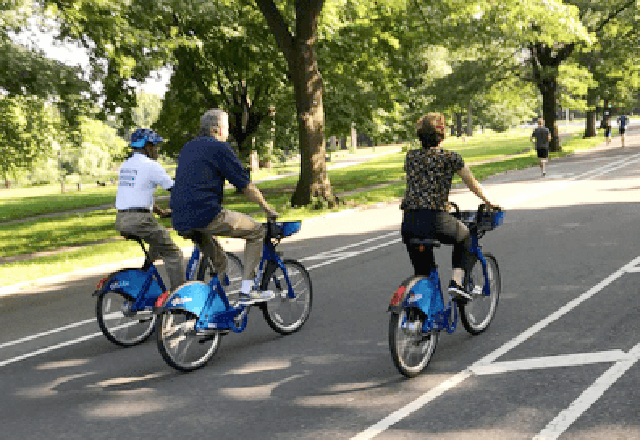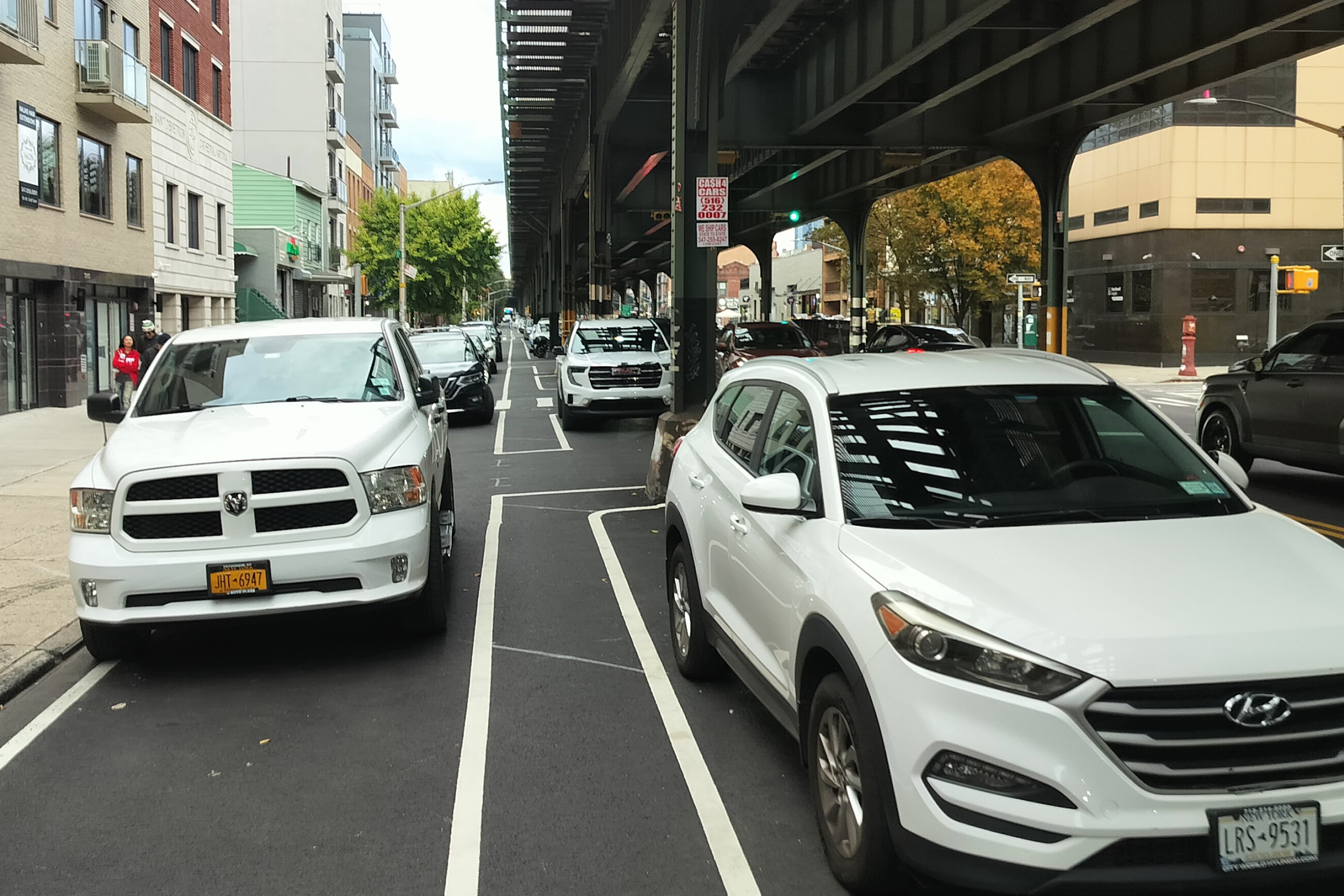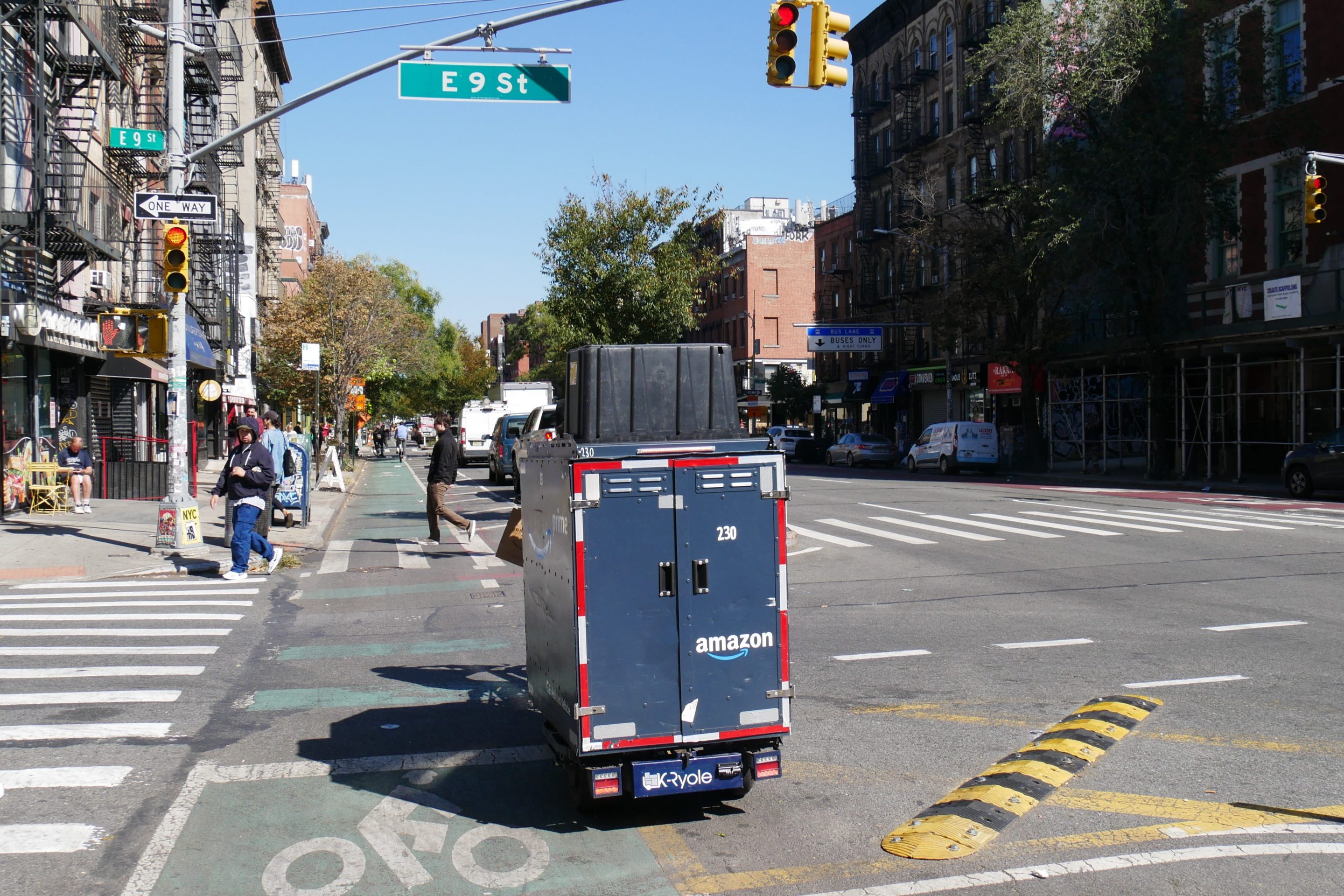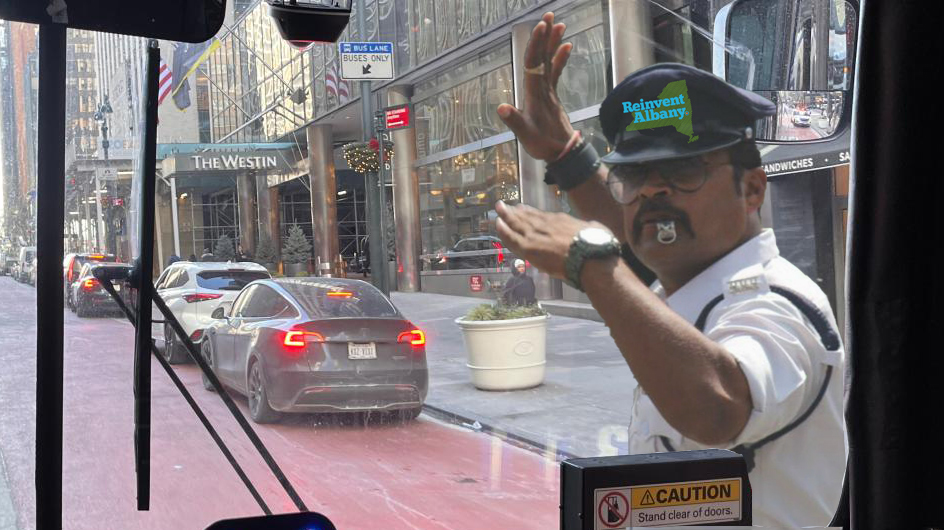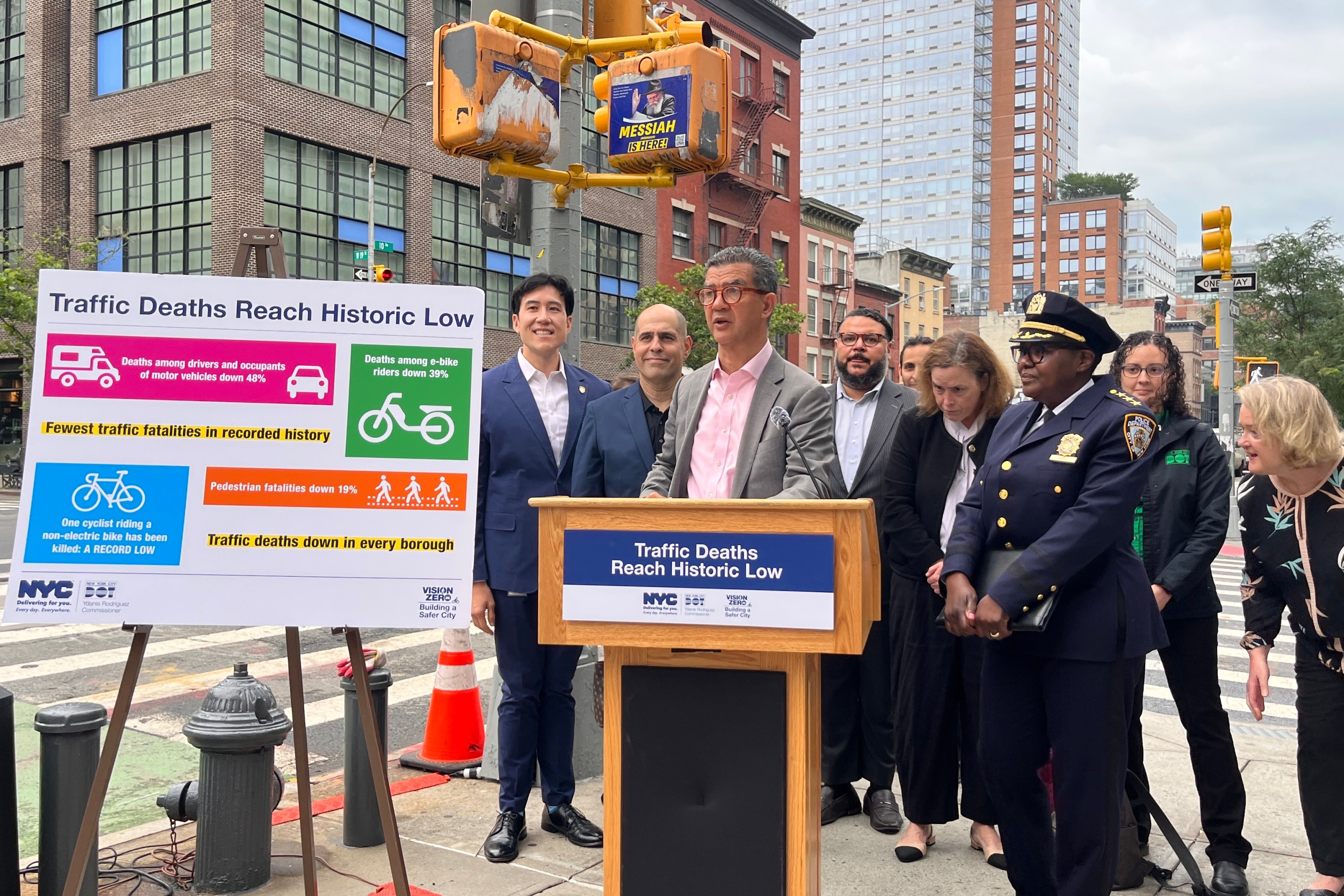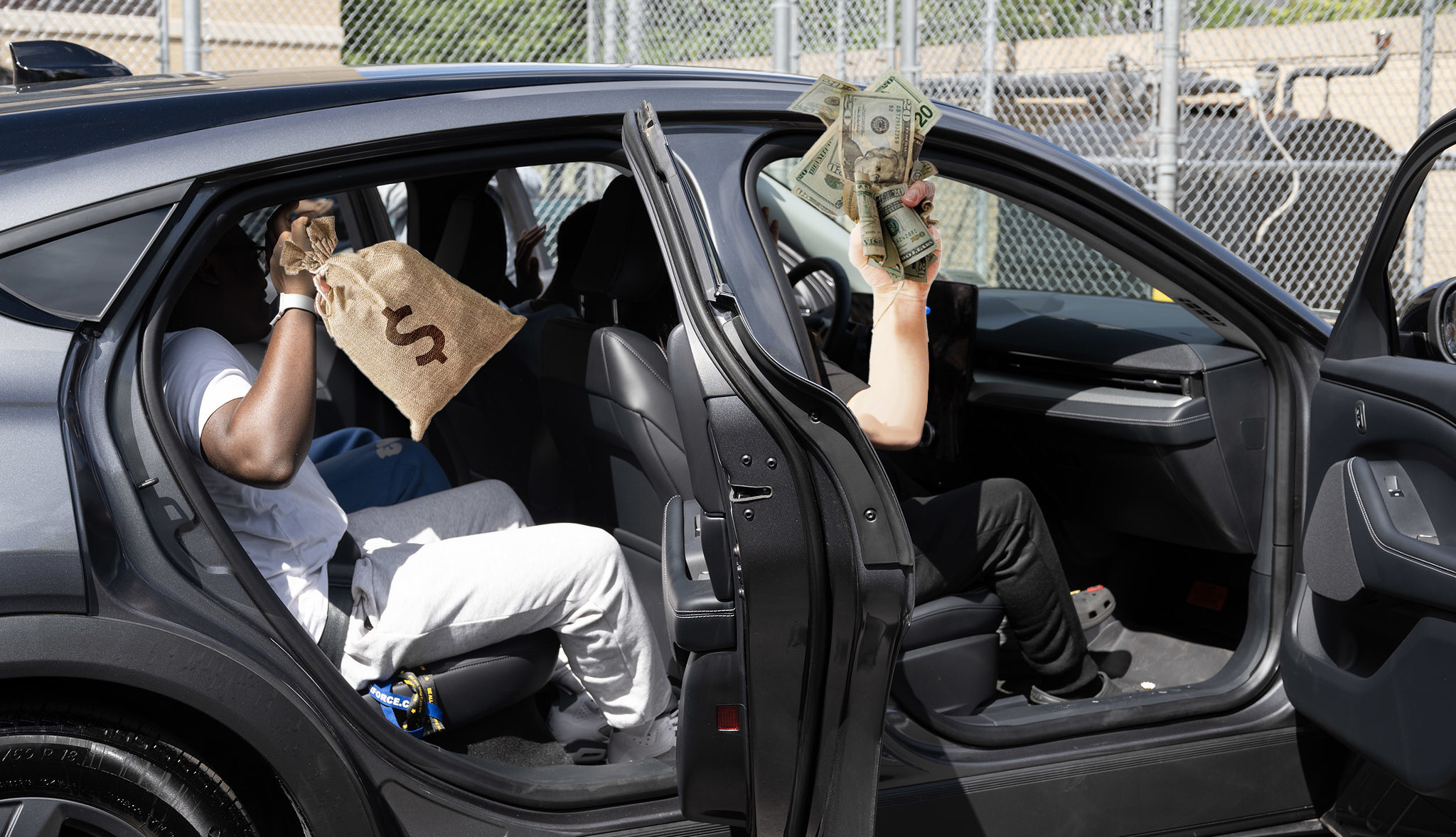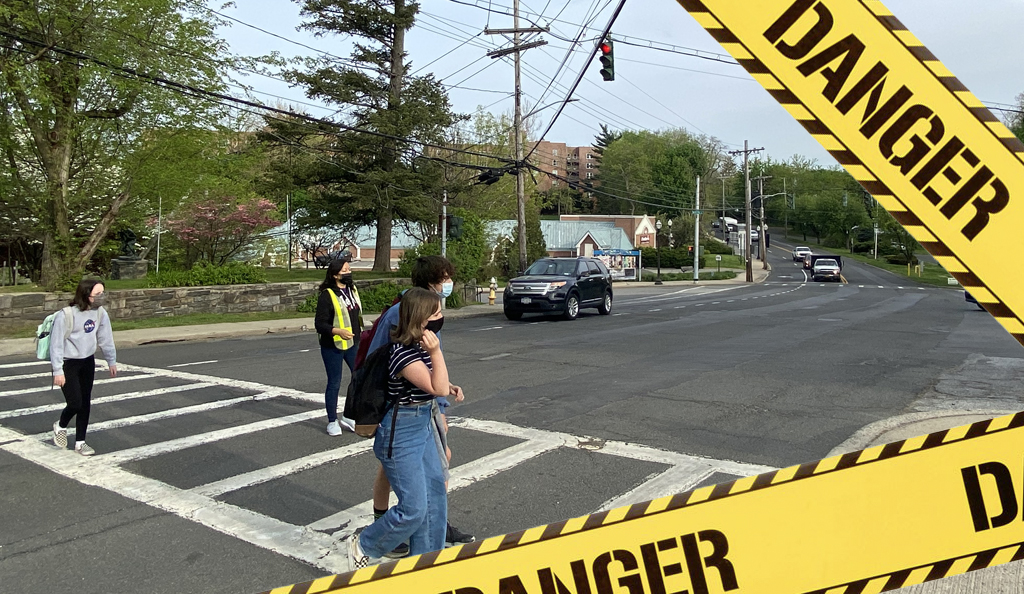To all the cyclists out there who complain that the city streets are "dominated by cars" or "not safe to use" or "a death trap," Mayor de Blasio has a message for you: "Imagine how much worse it would be without me."
Earlier this week, Public Advocate Jumaane Williams told Streetsblog that he feels unsafe riding his bike around the city — but Hizzoner shrugged off a question from this reporter on Thursday and insisted that other bike riders know that his "Vision Zero initiative" has transformed the city.
Williams had injured his upper body and had his bike totaled when he was hit by a driver making a left turn through from Fourth Avenue on to Shore Road, a chaotic intersection that serves as an entrance to the Brooklyn-Queens Greenway that also contains multiple highway on- and off-ramps. The mayor declined to talk about the intersection in his answer to the first part of Streetsblog's two-part question about Williams's comments from this week. But we pressed on:
Streetsblog: The Public Advocate [was] saying "I'm not comfortable riding out there." He's a pretty visible city presence. What does that say about what other people are feeling when they're riding in the city?
Mayor de Blasio: Again, I think there are so many people in this city who are using their bicycles and understand, even though it's a crowded city, you know, a lot has been done to try and improve the experience for the safety of bike riders and for pedestrians. That's the whole idea of Vision Zero. We have to just constantly add to it. The reality of this city, this big, intense, crowded place is that, thank God we have Vision Zero as a strategy. If we didn't, we'd be in much worse shape. ... I think people can see that and feel that, and they'll make their own choices, of course, but as a matter of how we move forward, that's what will work for New York City.
Despite initiatives like the Green Wave (with its far in the future proposal for a citywide network of protected bike lanes) and his double-barreled support for school zone speed cameras, de Blasio would no doubt run the risk of inviting more cyberbullying than usual if he took to the #bikenyc hashtag and tweeted that "a lot has been done to to try to improve the experience for the safety of bike riders." This is the same mayor, after all, who was recently took heat for ignoring the street safety recommendations, like a network of protected bike lanes now and not later, from his own surface mobility council and defended his security detail parking in a protected bike lane by pointing out how many of America's recent bike lanes he's responsible for.
The comments also came on the same day as a cyclist was hit and killed by a driver in Brooklyn during a particularly deadly month for cyclists. So far this month, three cyclists have been killed by drivers (a fourth cyclist was killed in a collision with a pedestrian) and 13 have been killed this year, despite dramatic reductions in car traffic from March through June due to COVID-19. The recent carnage shows that "Mayor de Blasio must do more to bring an end to traffic violence," Transportation Alternatives said in a statement on Thursday.
The mayor was also criticized by People's Bike Mayor Courtney Williams at a press conference on Wednesday for what she said was a "deficit in safe, protected bike infrastructure in #bikenyc."
As I said at the @bridges4people press conference, there is NO amount of bike safety education I can provide that will overcome the deficit in safe, protected bike infrastructure in #bikenyc.
— Courtney Williams (@BrownBikeGirl) September 10, 2020
Give the people what they need @NYCMayor @NYC_DOT
Signed#nycbikemayor pic.twitter.com/JUIn3wwVJs
And Bike New York Director of Communications Jon Orcutt dismissed de Blasio's answer as "Mayoral word salad" from an executive who's offered a mixed bag on emergency bike lanes to support the pandemic-related bike boom.
"There has been no concerted effort by the city in response to the COVID bike boom," said Orcutt. "Prior to the pandemic, the city was already tone deaf to cycling community complaints and studies that New York City’s newer protected bike lanes are routinely filled with trucks and cars. Vision Zero is essentially a policy to shift trade offs in street design decisively in favor of safety, but administration decisions still heavily favor traffic flow, car parking and NIMBY concerns."
The city's temporary bike lanes and somewhat disconnected open streets program also pales in comparison to what other cities have done during coronavirus, such as Dublin's effort to remove parking spaces to widen sidewalks, Seattle's decision to make a series of their open streets permanent and of course Paris' massive expansion of bike lanes that ran parallel to subway lines.
It was in some sense, a friendlier answer than this website has managed to get out of the administration when asking about the safe cycling deficit, such as a 2019 press conference where the mayor said any criticism of the NYPD's handling of Vision Zero was borne out of a biased worldview and not the facts on the ground.
